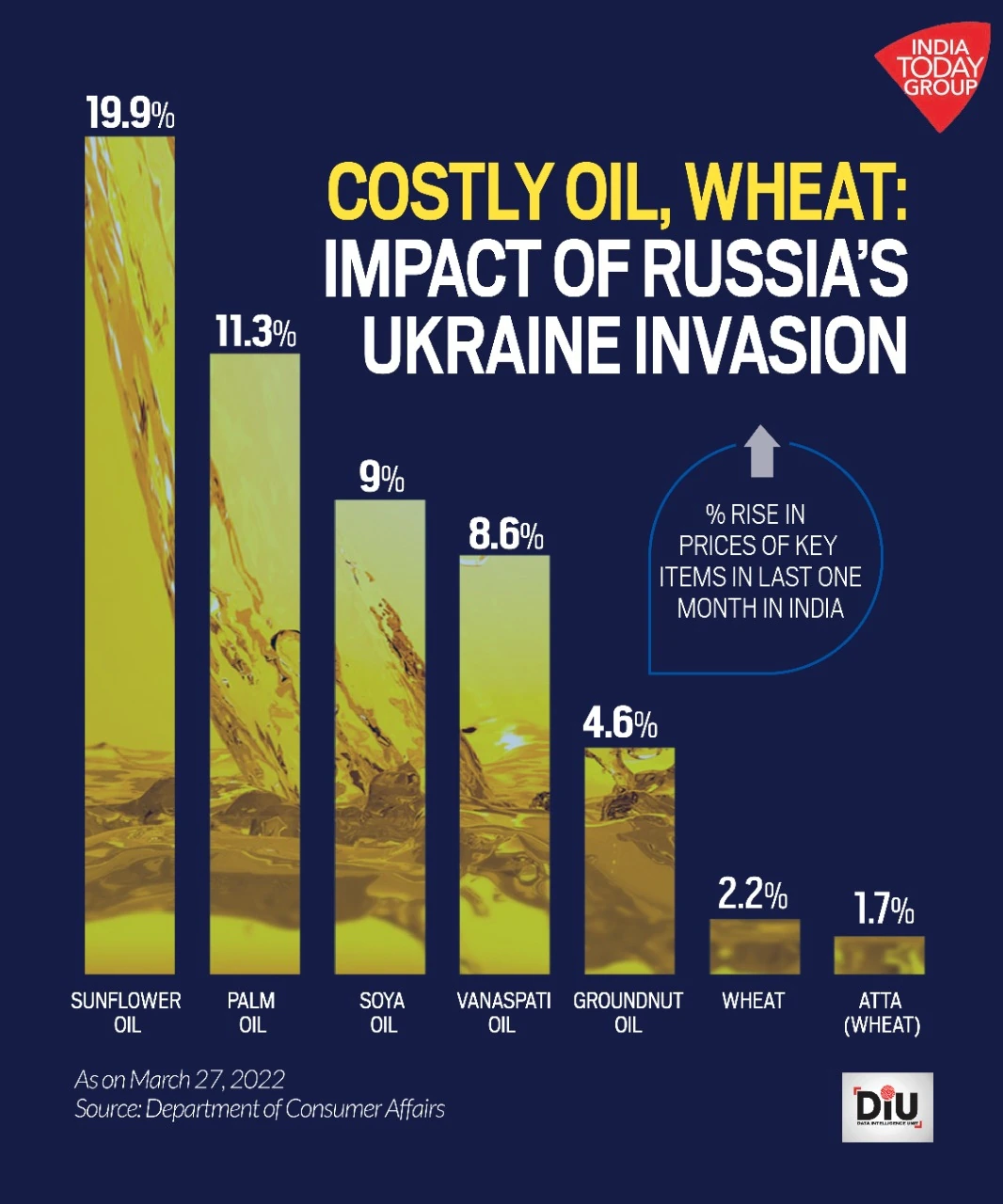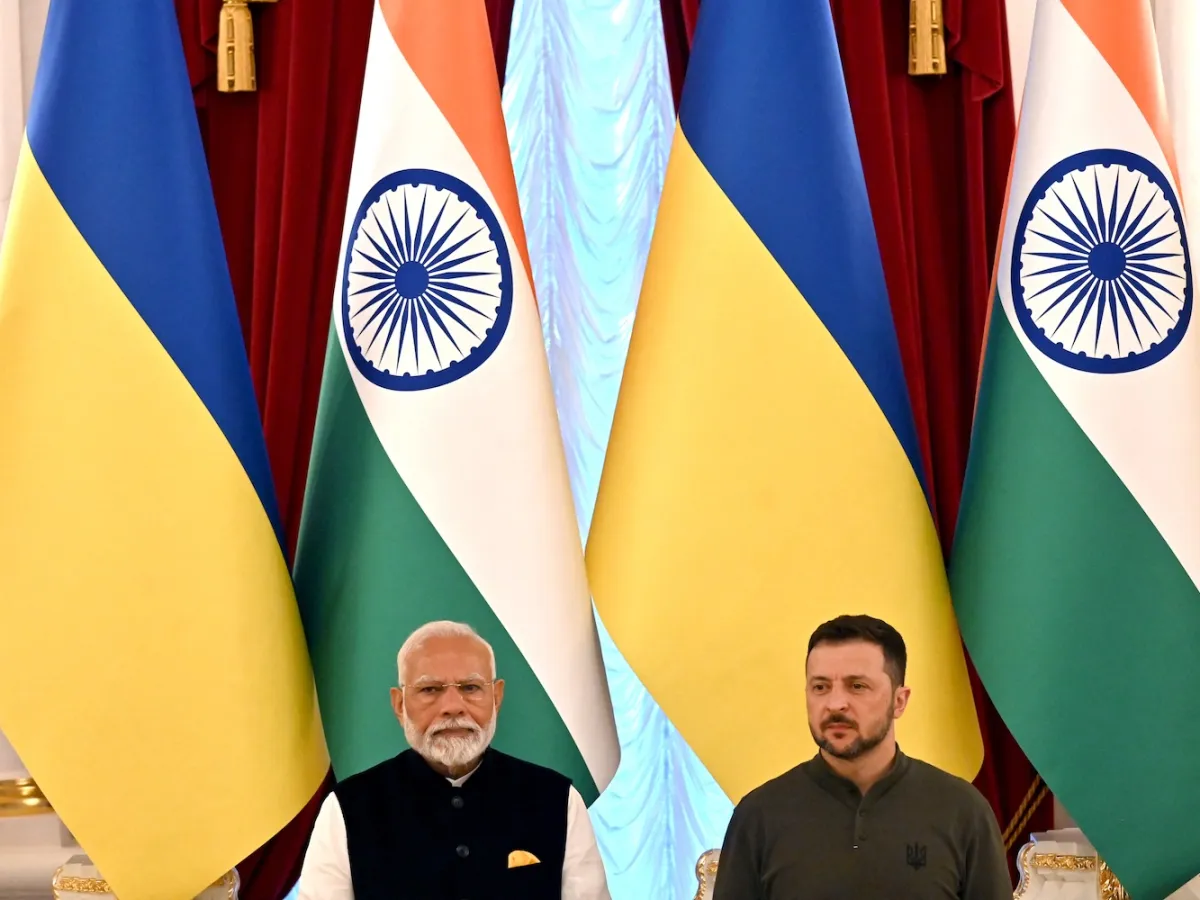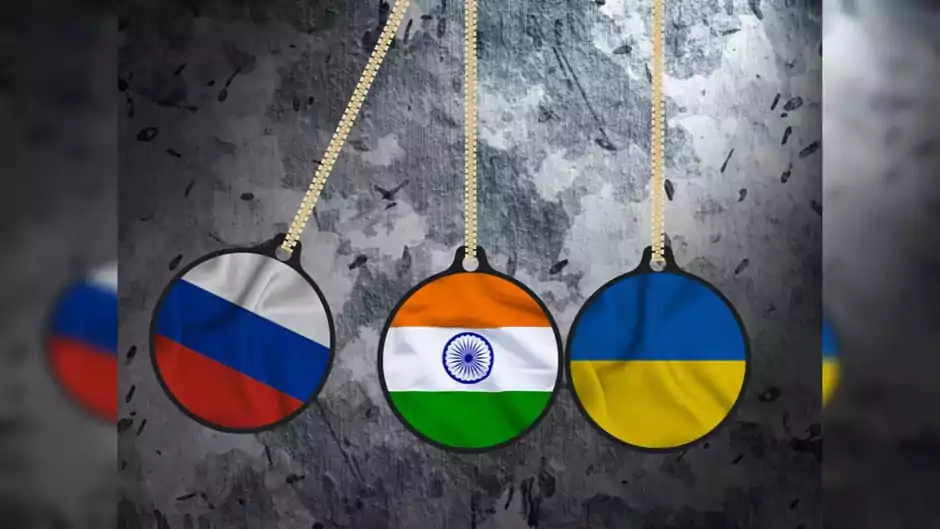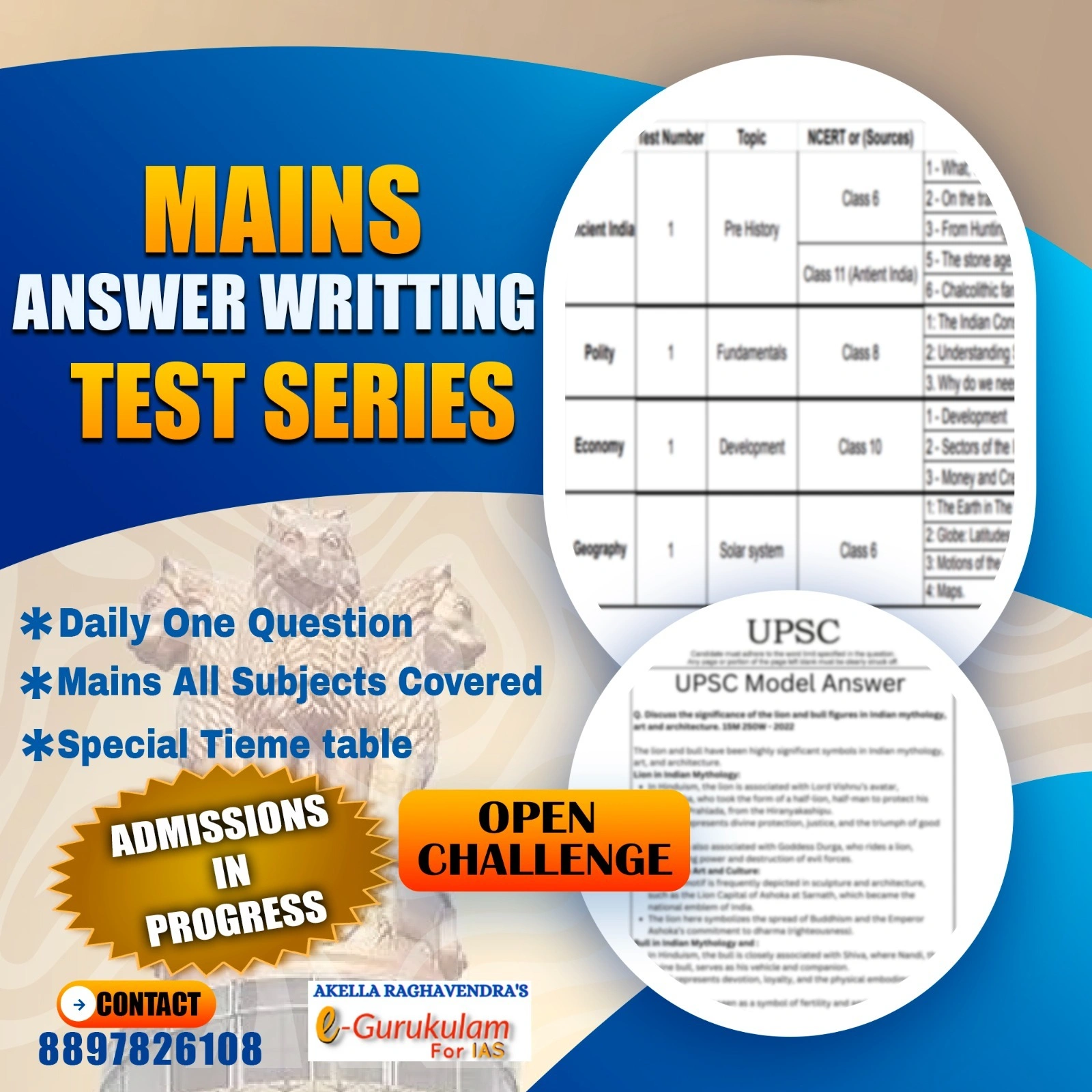Impact of the Russia-Ukraine War on India
A Detailed History of Russia-Ukraine Relations
The relationship between Russia and Ukraine is deeply rooted in centuries of shared history, cultural connections, and geopolitical struggles. From the early medieval period to the present-day war, their ties have been shaped by imperial conquests, Soviet rule, independence movements, and conflicts over national identity and sovereignty. Below is a detailed historical overview of Russia-Ukraine relations.
- Early History: Kievan Rus and Russian Influence (9th–18th
Century)
Kievan Rus (9th–13th Century)
- The origins of Russia, Ukraine, and Belarus can be traced to Kievan Rus, a powerful medieval Slavic state that emerged in the 9th century.
- Kyiv (modern-day Ukraine’s capital) was the heart of Kievan Rus and became a major centre of Orthodox Christianity after Prince Vladimir the Great adopted Christianity in 988.
- Kievan Rus fell into decline due to internal struggles and was eventually destroyed by the Mongol invasion in 1240.
Polish-Lithuanian and Russian Influence (14th–18th Century)
- After the Mongol period, Ukraine came under Polish-Lithuanian rule, while Moscow grew into a powerful state.
- In the 17th century, Ukrainian Cossacks, led by Bohdan Khmelnytsky, revolted against Polish rule and sought protection from the Russian Tsar in 1654 (Treaty of Pereyaslav).
- This led to Ukraine becoming part of the Russian Empire in stages, with full annexation by Catherine the Great in the late 18th century.
- Russian Empire and Ukrainian Nationalism (18th–20th
Century)
Russian Rule and Suppression of Ukrainian Identity (18th–19th Century)
- Under the Russian Empire, Ukraine was known as “Little Russia” and its culture, language, and identity were suppressed.
- The Russian government imposed Russification policies, banning the Ukrainian language and limiting cultural expression.
- Despite this, Ukrainian nationalism grew, with movements seeking greater autonomy.
Ukrainian Independence Efforts (1917–1922)
- During the Russian Revolution (1917) and the collapse of the Russian Empire, Ukraine briefly declared independence in 1918, forming the Ukrainian People’s Republic (UPR).
- However, after a series of conflicts, Ukraine was absorbed into the newly formed Soviet Union (USSR) in 1922.
- Soviet Period: Famine, WWII, and Industrialization
(1922–1991)
Holodomor: The Man-Made Famine (1932–1933)
- Under Joseph Stalin’s rule, forced collectivization of agriculture led to the Holodomor, a devastating famine in Ukraine.
- It is estimated that 3–7 million Ukrainians died, and many historians consider it a genocide as it was deliberately caused by Soviet policies.
World War II (1941–1945)
- Nazi Germany invaded the Soviet Union in 1941, and Ukraine became a major battleground.
- Many Ukrainians saw the Germans as liberators from Soviet oppression, but Nazi atrocities turned the population against them.
- After the war, Ukraine remained part of the Soviet Union, heavily industrialized and an essential part of the Soviet economy.
Post-War Soviet Rule (1945–1991)
- Ukraine became a centre of Soviet industry and military production.
- Ukrainian identity was still suppressed, though Ukraine had a seat at the United Nations as part of Soviet diplomatic strategy.
- In 1954, Soviet leader Nikita Khrushchev transferred Crimea from Russia to Ukraine, a symbolic gesture that later became a major point of contention.
- Ukrainian Independence and Post-Soviet Tensions
(1991–2013)
Ukraine declared Independence from the USSR (1991)
- With the collapse of the Soviet Union, Ukraine declared independence on August 24, 1991.
- Ukraine inherited a large nuclear arsenal, which it agreed to give up in 1994 in exchange for security guarantees from Russia, the US, and the UK (Budapest Memorandum).
Economic Struggles and Russian Influence (1991–2013)
- Post-independence, Ukraine faced economic hardship, political instability, and corruption.
- Russia continued to influence Ukrainian politics, supporting pro-Russian leaders and pressuring Ukraine over energy and trade.
- Ukraine was caught between closer ties with the West (EU, NATO) and its historical ties to Russia.
- 2014 Crisis: Annexation of Crimea and War in Donbas
Euromaidan Protests and Political Shift (2013–2014)
- In 2013, Ukrainian President Viktor Yanukovych rejected an EU trade deal in favour of closer ties with Russia.
- This led to mass protests (Euromaidan Movement), resulting in Yanukovych being overthrown in February 2014.
- Russia condemned the protests as a Western-backed coup.
Russia Annexes Crimea (2014)
- In March 2014, Russia annexed Crimea following a disputed referendum.
- Western countries refused to recognize the annexation and imposed sanctions on Russia.
War in Donbas (2014–Present)
- In Eastern Ukraine, pro-Russian separatists in Donetsk and Luhansk declared independence, leading to a brutal conflict.
- Russia supported separatists militarily, though it denied direct involvement.
- The war resulted in over 14,000 deaths by 2021.
- Russia-Ukraine War (2022–Present)
Full-Scale Russian Invasion (February 2022)
- On February 24, 2022, Russia launched a full-scale invasion of Ukraine, citing NATO expansion and “denazification” as pretexts.
- The invasion was met with strong Ukrainian resistance, backed by Western military aid.
- The war caused millions of Ukrainian refugees to flee to Europe.
Impact of the War
- Western nations imposed severe sanctions on Russia, crippling its economy.
- Ukraine received military aid from NATO countries, including tanks, missiles, and drones.
- Russia annexed four more regions (Donetsk, Luhansk, Zaporizhzhia, and Kherson) in 2022, but faced Ukrainian counteroffensives.
- Current Status & Future Outlook
Geopolitical Consequences
- The war reshaped global politics, with Europe reducing energy reliance on Russia.
- Ukraine moved closer to EU and NATO membership.
- Russia faced isolation, relying on China, India, and Iran for support.
Possible Resolutions
- Peace talks have stalled, with both sides unwilling to compromise.
- Ukraine demands full territorial integrity, while Russia refuses to withdraw.
- The conflict could result in a long-term frozen conflict or a negotiated settlement.

The ongoing Russia-Ukraine war, which began in February 2022, has significantly influenced India's economy, energy security, diplomatic strategies, defence sector, and trade relations. As a rising global power, India has navigated this geopolitical crisis by balancing its strategic interests while addressing economic and security challenges. This analysis explores the war's multifaceted impact on India and the country’s response to emerging challenges.
1.Economic Impact
The Russia-Ukraine war has had significant economic consequences for India, affecting inflation, trade, foreign exchange reserves, and industrial production. The disruptions in global supply chains and sanctions on Russia created ripple effects across various sectors, making India vulnerable to price fluctuations and trade uncertainties.
1.1 Inflation and Commodity Prices
One of the most immediate and severe impacts of the war was a sharp increase in global commodity prices, especially crude oil, natural gas, wheat, fertilizers, and edible oils.
- Rising Crude Oil Prices: India, as the world's third-largest importer of crude oil, faced soaring energy costs as global oil prices crossed $100 per barrel in early 2022. This increased the import bill and widened India's trade deficit, putting additional pressure on domestic fuel prices and inflation.
- Natural Gas & Energy Costs: The global disruption in natural gas supplies, especially from Russia to Europe, led to increased demand for alternative sources, raising liquefied natural gas (LNG) prices. This impacted Indian industries reliant on gas, such as fertilizers, power generation, and steel production.
- Wheat & Edible Oil Shortages: Ukraine and Russia together accounted for nearly 30% of global wheat exports. The war led to wheat shortages, driving global prices up. Initially, India attempted to capitalize on this by increasing wheat exports but later imposed restrictions to control rising domestic prices. Similarly, sunflower oil supplies from Ukraine were disrupted, leading to higher prices for edible oils in India, prompting increased imports from Indonesia and Malaysia.
- Fertilizer Supply Disruptions: Russia and Belarus are among the largest global suppliers of potash, a key ingredient in fertilizers. Sanctions on these countries caused fertilizer shortages, pushing up costs for Indian farmers. The Indian government had to increase fertilizer subsidies to support agricultural production and prevent a food crisis.
These inflationary pressures led to higher living costs for Indian consumers, affecting household budgets and economic growth.
1.2 Trade Disruptions & Rupee Volatility
Western sanctions on Russia affected India's trade relations and financial transactions, forcing businesses to adopt alternative trade mechanisms.
- Bilateral Trade with Russia: Before the war, Russia was not a major trade partner for India, but sanctions on Russian banks and companies disrupted trade payments. To bypass restrictions, India and Russia explored the rupee-ruble trade mechanism, allowing transactions in local currencies instead of using the US dollar. However, challenges in currency convertibility and low Russian demand for Indian goods led to imbalances in trade.
- Impact on Indian Exports: Indian exporters faced difficulties in receiving payments due to Russia being cut off from SWIFT (the global banking transaction system). Sectors such as pharmaceuticals, engineering goods, tea, and textiles saw a temporary decline in exports due to payment and logistics issues.
- Depreciation of the Indian Rupee: The war-driven increase in India's oil import bill weakened the rupee against the US dollar, contributing to exchange rate volatility. The rupee fell to record lows against the dollar in 2022, increasing costs for businesses and pushing inflation higher. The Reserve Bank of India (RBI) had to intervene through foreign exchange reserves to stabilize the currency.
1.3 Shift in Trade Patterns
As the war continued, India adjusted its trade strategy:
- Increase in Russian Oil Imports: By 2023, Russia had become India’s largest crude oil supplier, surpassing Iraq and Saudi Arabia. Indian refineries processed Russian crude at a discount, providing relief against high energy costs.
- Reduced Engagement with Ukraine: Due to the war, India's trade with Ukraine declined significantly, impacting imports of sunflower oil, fertilizers, and defense-related materials.
- Diversification of Import Sources: India increased its energy and agricultural imports from other regions, such as the Middle East (for oil) and Canada (for potash fertilizers), to reduce over-reliance on any single country.
2. Energy Security
Energy security has been one of the most critical aspects of India's response to the Russia-Ukraine war. As a rapidly growing economy, India heavily depends on energy imports, particularly crude oil and natural gas, to fuel its industries and transportation networks. The war led to significant disruptions in global energy markets, causing price volatility and supply chain challenges. However, it also created opportunities for India to strengthen its energy partnerships, explore alternative fuel sources, and accelerate its renewable energy transition.
2.1 Discounted Russian Oil Imports
One of the most defining outcomes of the war was India's shift in crude oil procurement strategy.
- Pre-war Oil Import Trends: Before the war, Russia accounted for less than 1% of India’s total crude oil imports, with the majority coming from the Middle East, particularly Iraq, Saudi Arabia, and the UAE.
- Surge in Russian Oil Purchases: As Western nations imposed strict sanctions on Russian oil, including price caps and banking restrictions, Russia began offering heavily discounted crude oil to alternative buyers, including India and China. India capitalized on these discounts, rapidly increasing Russian oil imports, which by 2023 made Russia India's largest crude oil supplier, surpassing Iraq and Saudi Arabia.
- Economic Benefits: The availability of cheaper Russian oil helped India reduce its import costs, allowing refiners to maintain profitability and stabilize domestic fuel prices. This move was particularly beneficial at a time when global crude oil prices had spiked due to supply chain disruptions.
- Geopolitical Challenges: Despite pressure from Western countries, particularly the US and the European Union, to reduce energy trade with Russia, India defended its purchases by emphasizing its need for affordable energy. India also avoided adhering to the US-led price cap of $60 per barrel, continuing to buy Russian crude at negotiated rates above this limit.
2.2 Impact on Natural Gas Supplies & Industry
While crude oil was available at discounts, the war significantly affected global natural gas supplies, leading to price hikes and supply constraints for industries dependent on gas imports.
- European Gas Shortages: The EU relied heavily on Russian natural gas before the war. As European nations imposed sanctions and Russia reduced gas exports in retaliation, global demand for alternative natural gas sources surged, leading to increased competition and higher Liquefied Natural Gas (LNG) prices.
- Effects on Indian Industries: India, which imports a significant portion of its LNG, faced higher import costs. This impacted industries such as fertilizer production, power generation, and heavy manufacturing, where natural gas is a key input. Increased costs were passed on to businesses and consumers, contributing to inflationary pressures.
- Exploring Alternative LNG Suppliers: To counter the price hikes, India ramped up negotiations with other LNG-producing nations, including Qatar, the United States, and Australia, to secure long-term supply contracts at stable prices.
2.3 Diversification of Energy Sources
The energy crisis triggered by the war reinforced India's strategy to diversify its energy sources to reduce over-reliance on specific suppliers or geopolitical regions.
- Increasing Middle Eastern & African Oil Imports: While Russian oil imports surged, India simultaneously strengthened ties with Saudi Arabia, the UAE, and Iraq to ensure a balanced and diversified oil supply. Additionally, African nations such as Nigeria and Angola emerged as alternative suppliers.
- Expansion of Domestic Oil & Gas Exploration: The crisis also underscored the need for greater domestic energy production. The Indian government encouraged investment in oil and gas exploration projects in regions such as the Krishna-Godavari Basin and Rajasthan to enhance self-reliance.
- Renewable Energy Acceleration: The volatility in fossil fuel prices reinforced India’s commitment to clean energy. The government increased investments in solar, wind, and hydroelectric projects, with a focus on achieving 500 GW of non-fossil fuel capacity by 2030.
- Boosting Green Hydrogen Initiatives: The crisis highlighted the importance of alternative fuels, leading India to launch the National Green Hydrogen Mission, aimed at reducing dependence on imported fossil fuels and promoting clean hydrogen as a future energy source.
2.4 Long-Term Energy Security Strategy
The lessons from the war have shaped India’s long-term energy security strategy in the following ways:
- Strengthening Strategic Petroleum Reserves (SPR): India expanded its Strategic Petroleum Reserve program, increasing storage capacity to mitigate future supply shocks.
- Enhancing Energy Infrastructure: Investments in new refineries, LNG terminals, and cross-border energy pipelines were prioritized to enhance energy distribution and security.
- Participating in Global Energy Alliances: India strengthened cooperation with international energy organizations, including the International Energy Agency (IEA) and BRICS Energy Alliance, to secure long-term energy supplies.
3. Diplomatic and Strategic Shifts
The Russia-Ukraine war placed India in a complex diplomatic situation, requiring a careful balancing act between its traditional ties with Russia and its growing partnerships with the United States, the European Union, and other Western allies. India’s approach has been characterized by strategic autonomy, focusing on protecting its national interests while promoting peace and dialogue on the global stage.
3.1 india's Position at the United Nations: Navigating a Neutral Stance
Since the outbreak of the war, India has maintained a neutral stance at the United Nations (UN), refraining from taking a side while advocating for dialogue. India’s response at the UN has been shaped by:
- Abstentions on Anti-Russia Resolutions: India has abstained from voting on multiple UN General Assembly (UNGA) and UN Security Council (UNSC) resolutions condemning Russia’s actions. India’s abstentions were driven by its historic ties with Russia, economic interests, and strategic autonomy.
- Support for Territorial Integrity: While avoiding direct criticism of Russia, India has consistently emphasized the importance of respecting sovereignty and territorial integrity—a principle that aligns with India’s long-standing foreign policy.
- Call for Dialogue and Peaceful Resolution: India has urged both Russia and Ukraine to resolve the conflict through diplomacy and negotiations, rather than military action.
India’s pragmatic approach was reflected in Prime Minister Narendra Modi’s statement, “This is not an era of war,” which was widely seen as a diplomatic attempt to advocate peace without alienating Russia.
3.2 Relations with the United States and European Union
The US and EU have been vocal in their opposition to Russia’s actions, urging India to take a stronger stance against Moscow. This has led to diplomatic challenges, as India sought to balance its historical ties with Russia and its strategic partnerships with the West.
US and EU Pressure on India
Western nations applied diplomatic pressure on India to:
- Reduce dependence on Russian oil and defence supplies.
- Condemn Russia’s military actions in Ukraine.
- Limit trade and financial transactions with Russia to weaken its economy.
Despite these pressures, India firmly defended its independent foreign policy, citing the need to prioritize national economic and security interests.
India’s Diplomatic Balancing Act
To ease tensions with Western partners, India took a multi-pronged approach:
- Energy Diplomacy: India assured the US and EU that while increasing Russian oil imports, it was also diversifying its energy sources by expanding purchases from Saudi Arabia, the UAE, and the US.
- Strengthening Economic Ties with the West: India signed multiple trade agreements with European nations, the UK, and the US, reducing dependence on any single economic partner.
- QUAD Engagement: India intensified cooperation with the QUAD alliance (India, the US, Japan, and Australia), focusing on Indo-Pacific security to counterbalance China’s influence.
- Strategic Military Collaborations: India expanded defence purchases from the US, France, Israel, and other European partners to gradually reduce its dependence on Russian military supplies.
These measures helped India maintain strong relations with Western nations while preserving its traditional ties with Russia.
3.3 Strengthening Relations with Russia Amid Sanctions
While balancing Western concerns, India continued to deepen its relationship with Russia, which remains a key economic and defence partner.
Trade Expansion Despite Sanctions
- India increased bilateral trade with Russia, particularly in the energy and defence sectors. Trade between the two nations crossed $50 billion in 2023, with India benefiting from discounted Russian crude oil.
- To bypass Western financial restrictions, India and Russia explored
alternative payment mechanisms, including:
- Rupee-Ruble trade settlements (though this mechanism faced challenges due to currency imbalances).
- Using third-party currencies like the UAE Dirham and Chinese Yuan for trade transactions.
Defence and Strategic Cooperation
- India continued military procurements from Russia, including critical defence systems such as the S-400 missile system.
- Despite Western opposition, India did not join sanctions against Russia, arguing that its long-term defence requirements necessitate continued cooperation.
- India participated in joint military drills and defence dialogues with Russia, reaffirming its strategic partnership.
3.4 India’s Role as a Global Mediator
India’s neutral stance and diplomatic credibility positioned it as a potential mediator in the Russia-Ukraine crisis.
G20 Presidency and Peace Advocacy
- During its G20 Presidency in 2023, India used its leadership role to promote global peace dialogues and push for diplomatic solutions to the conflict.
- India hosted international summits and engaged in backchannel diplomacy to facilitate peace talks between Russia and Ukraine.
Humanitarian Assistance to Ukraine
- India provided humanitarian aid to Ukraine, including medical supplies, food assistance, and economic aid.
- By maintaining humanitarian support while refraining from military involvement, India showcased its commitment to global peace without taking sides in the conflict.
3.5 Addressing China’s Growing Influence Over Russia
One of the biggest diplomatic concerns for India was China’s increasing economic and strategic influence over Russia.
- China-Russia Economic Ties: As Western nations imposed sanctions on Russia, China became one of Russia’s largest economic partners, raising concerns about Moscow becoming overly dependent on Beijing.
- Strategic Realignment Risks: India closely monitored China’s deepening defence ties with Russia, as it could affect India’s access to Russian defence technology and shift regional power dynamics.
- Border Tensions with China: Given India’s ongoing Ladakh border standoff with China, India remained cautious about Russia’s diplomatic positioning between New Delhi and Beijing.
To counterbalance China’s influence over Russia, India strengthened its own economic and military ties with Moscow while also deepening engagements with Western powers and Indo-Pacific allies.
3.6 Long-Term Foreign Policy Implications
India’s handling of the Russia-Ukraine war reaffirmed its commitment to a “multi-alignment” foreign policy—engaging with multiple global powers without being tied to any single alliance.
- India’s approach reinforced its strategic autonomy, allowing it to independently navigate geopolitical challenges without external influence.
- By maintaining diplomatic flexibility, India emerged as a key global player capable of balancing economic growth, security interests, and international relations.
- India’s focus on self-reliance in defence, energy, and trade highlighted its strategy of reducing external dependencies while strengthening its global influence.
4. Economic and Trade Implications
The Russia-Ukraine war has had a significant economic impact on India, affecting inflation, trade, energy prices, supply chains, and financial transactions. As a major emerging economy, India faced challenges in securing critical imports, stabilizing its markets, and ensuring economic resilience amid global uncertainty.
Despite these disruptions, India capitalized on new trade opportunities and adapted its economic policies to maintain growth and stability.
4.1 Rising Inflation and Commodity Price Surge
The war led to a global increase in oil, gas, food, and fertilizer prices, causing inflationary pressures in India. Key areas affected included:
Fuel Prices and Energy Costs
- Crude oil prices surged above $120 per barrel in mid-2022 due to supply chain disruptions and Western sanctions on Russia.
- As a major oil-importing nation, India faced higher fuel costs, impacting transportation, manufacturing, and overall inflation.
- To offset high energy costs, India increased its import of discounted Russian oil, helping stabilize fuel prices domestically.
Fertilizer Shortages and Agricultural Challenges
- Russia and Belarus are among the largest exporters of potash, a critical ingredient in fertilizers.
- Due to sanctions and trade restrictions, fertilizer imports from Russia declined, leading to a short-term supply crunch in India.
- To manage this, India secured alternative sources from Canada and Middle Eastern nations while increasing subsidies to support farmers.
Food Price Inflation
- Ukraine is one of the world’s top wheat exporters, and the war disrupted global wheat supply chains.
- Fearing a domestic shortage, India temporarily banned wheat exports in 2022 to maintain food security.
- Prices of edible oils (such as sunflower oil, which India imports from Ukraine and Russia) also surged, leading to inflation in cooking oil prices.
- India increased palm oil imports from Indonesia and Malaysia to mitigate the impact.
These inflationary challenges forced India to adjust its trade policies and explore alternative sources to ensure price stability.
4.2 Global Supply Chain Disruptions and Trade Challenges
The war caused major disruptions in global trade and logistics, affecting key sectors in India.
Semiconductor and Electronics Industry
- Ukraine and Russia are key suppliers of neon gas and palladium, which are essential for semiconductor manufacturing.
- Due to war-related supply disruptions, global semiconductor shortages worsened, impacting India’s electronics and automobile sectors.
- India responded by:
- Boosting domestic semiconductor production through incentives and partnerships.
- Collaborating with Taiwan and the US to secure chip supplies.
Pharmaceutical and Machinery Exports to Russia
- India is a major exporter of pharmaceuticals and machinery to Russia, but Western sanctions on Russian banks complicated payment settlements.
- Indian exporters faced delayed payments and financial uncertainties, leading to reduced trade volumes.
- To address this, India and Russia:
- Explored rupee-ruble trade mechanisms to bypass SWIFT restrictions.
- Used third-party banking systems in the UAE and China to facilitate trade.
4.3 Trade Expansion with Russia: A Strategic Opportunit
Despite challenges, India expanded its economic ties with Russia, particularly in the energy and defence sectors.
Surge in India-Russia Bilateral Trade
- Bilateral trade exceeded $50 billion in 2023, a sharp increase from pre-war levels.
- Key trade areas:
- Crude oil and energy imports: India capitalized on discounted Russian oil, becoming Russia’s largest oil customer.
- Defence imports: India continued to receive Russian military equipment despite Western opposition.
- Pharmaceutical exports: India increased exports of medicines and vaccines to Russia.
- Agriculture and food trade: India boosted exports of tea, rice, and spices to Russia, filling gaps left by Western trade sanctions.
Alternative Payment Mechanisms
Due to Western sanctions restricting financial transactions, India and Russia explored alternative trade settlement methods:
- Rupee-Ruble Trade: Attempts were made to trade directly using national currencies, but imbalances in trade volumes made this challenging.
- Third-Party Transactions: India used UAE Dirhams and Chinese Yuan for some transactions to bypass Western banking restrictions.
- Barter Trade Discussions: Some sectors explored barter trade agreements, exchanging goods instead of relying on financial transfers.
4.4 Energy Security and India’s Diversification Strategy
The war emphasized the importance of energy security, prompting India to diversify its energy sources and reduce dependence on any single country.
Expanding Energy Partnerships
- While increasing Russian oil imports, India also expanded energy ties with:
- Saudi Arabia and UAE for crude oil.
- US and Australia for LNG (Liquefied Natural Gas).
- Iran and Central Asia for long-term energy deals.
Boosting Domestic Energy Production
- India accelerated its investments in renewable energy (solar, wind, and biofuels) to reduce reliance on imported fossil fuels.
- The government promoted domestic oil exploration to increase self-sufficiency.
By strengthening energy security, India ensured price stability and economic resilience in the face of geopolitical crises.
4.5 India's Trade Realignment with the West
As India deepened ties with Russia, it also strengthened its trade relationships with Western nations to maintain a balanced economic strategy.
Increased Economic Engagement with the US and EU
- India pursued Free Trade Agreements (FTAs) with the UK and the European Union, ensuring preferential access to Western markets.
- US-India trade cooperation expanded, with increased investments in technology, defence, and clean energy.
Focus on Self-Reliance and Manufacturing
The war highlighted the risks of over-reliance on foreign supply chains, prompting India to:
- Boost domestic production through the "Make in India" and Atmanirbhar Bharat (Self-Reliant India) initiatives.
- Expand manufacturing in electronics, defence, and critical materials to reduce dependency on global imports.
By strengthening its economic ties with both Russia and the West, India maintained trade diversification and economic stability.
4.6 Long-Term Economic Policy Adjustments
The economic challenges posed by the war led to key policy shifts in India’s long-term trade and financial strategy:
- Diversifying Energy and Raw Material Sources
- Reducing dependence on any single country for essential imports.
- Increasing partnerships in Africa, Latin America, and Southeast Asia.
- Expanding Alternative Trade Mechanisms
- Developing independent financial transaction systems to bypass potential future sanctions.
- Strengthening ties with BRICS nations for trade resilience.
- Promoting Self-Sufficiency in Critical Sectors
- Enhancing domestic semiconductor production.
- Reducing reliance on foreign defence and industrial supplies.
- Strengthening Strategic Trade Partnerships
- Negotiating favourable trade agreements with multiple global players.
- Expanding India’s role as a leading exporter in pharmaceuticals, IT, and manufacturing.
5. Defense and Strategic Cooperation
Given India’s historical reliance on Russian military equipment, the war created concerns regarding supply chain disruptions, delayed deliveries, and potential sanctions on defence trade. In response, India strengthened its strategic partnerships with multiple global players, diversified its defence procurement sources, and accelerated efforts toward self-reliance in defence manufacturing.
5.1 India's Heavy Dependence on Russian Military Equipment
India has historically relied on Russia as its primary defence supplier, with 60-70% of its military equipment originating from Russia. Key military assets sourced from Russia include S-400 Triumf missile defence systems (critical for air defence), Sukhoi Su-30MKI and MiG-29 fighter jets (the backbone of the Indian Air Force), T-90 and T-72 battle tanks (used by the Indian Army), Kilo-class submarines and warships (for naval defence), and BrahMos supersonic cruise missiles (jointly developed by India and Russia).
Challenges Due to the War: Delayed deliveries due to strained Russian manufacturing caused procurement issues for India. Sanctions imposed by Western nations raised concerns about the availability of spare parts and maintenance for Russian-origin equipment. Financial transaction difficulties arose as restrictions on Russia’s banking system complicated defence payments. Despite these challenges, India continued to receive critical military supplies from Russia, including the delivery of the S-400 missile system despite US objections.
5.2 Strengthening Defense Ties with Western Nations
As concerns grew over-dependence on Russian arms, India expanded defence cooperation with Western countries, including the US, France, Israel, and the UK.
India-US Defense Partnership: Increased military exercises such as Yudh Abhyas and Malabar enhanced interoperability between Indian and US forces. The expansion of defence trade included purchases of MH-60R Seahawk helicopters for naval warfare, Predator drones for border surveillance, and Apache and Chinook helicopters for combat and transport operations. Technology-sharing agreements through the US-India Defense Technology and Trade Initiative (DTTI) facilitated joint weapon development.
India-France Defense Ties: The purchase of 36 Rafale fighter jets significantly boosted the Indian Air Force’s capabilities. Co-development of defence systems included discussions on submarines and jet engine technology. Naval cooperation expanded in the Indo-Pacific region.
India-Israel Defense Cooperation: India and Israel jointly developed surface-to-air missile systems such as Barak-8. India procured Heron drones and Spike anti-tank missiles from Israel. There was an increase in cybersecurity and intelligence-sharing initiatives between the two nations. By expanding its defence procurement sources, India reduced its over-reliance on Russian military technology while strengthening global security alliances.
5.3 The Need for Indigenous Defense Production
The war highlighted vulnerabilities in India's dependence on foreign arms imports, pushing the government to accelerate the Atmanirbhar Bharat (Self-Reliant India) initiative in defence.
Key Measures Taken: Increased investments in domestic defence production under the "Make in India" program. Development of indigenous fighter jets (Tejas), tanks (Arjun), and missile systems. Expansion of public-private partnerships in defence manufacturing. Establishment of defence corridors in Uttar Pradesh and Tamil Nadu to boost domestic arms production.
Successful Indigenous Projects: Tejas Light Combat Aircraft (LCA) strengthened India’s air defence with homegrown fighter jets. INS Vikrant became India’s first indigenously built aircraft carrier. Agni-V and Prithvi Missiles enhanced India’s long-range missile systems for strategic deterrence. DRDO’s Anti-Satellite Missile Test demonstrated India’s space defence capabilities. By prioritizing self-sufficiency in defence, India is reducing foreign dependency and strengthening its long-term security infrastructure.
5.4 Military Modernization and Strategic Expansion
The war underscored the importance of modernizing India’s armed forces to deal with emerging security threats, border tensions, and regional conflicts.
Key Areas of Modernization: Upgrading air defence systems to counter missile threats. Enhancing naval capabilities to secure the Indian Ocean region. Expanding cyber warfare and space defence programs. Improving border surveillance to counter threats from China and Pakistan.
Strengthening QUAD Security Cooperation: India has increased security engagement with the QUAD alliance (US, Japan, Australia, and India) to ensure regional stability. The QUAD nations have conducted joint naval exercises like Malabar. Maritime security efforts have been strengthened in the Indo-Pacific. Military intelligence sharing and cybersecurity collaboration have increased. With China’s increasing aggression in the South China Sea and the Himalayas, India’s military modernization and strategic partnerships have become crucial for maintaining regional power balance.
5.5 Impact on Geopolitical Strategy and Alliances
The war shifted global power dynamics, affecting India’s strategic calculations.
Russia-China Relations: A Strategic Concern for India: Russia’s growing dependence on China (due to Western sanctions) posed challenges for India. India and China remain geopolitical rivals, with ongoing border disputes in Ladakh. India closely monitored Russia-China military cooperation, ensuring its interests were not compromised.
Expanding Defense Diplomacy Beyond Russia and the West: To balance these developments, India strengthened military cooperation with Middle Eastern countries (UAE, Saudi Arabia) to increase arms trade. India deepened relations with Southeast Asian nations (Vietnam, and Indonesia) to counter China’s regional influence. India also expanded defence export ties with African and Latin American countries. By maintaining a multi-aligned defence strategy, India ensured its independent foreign policy and strategic autonomy.
Boost to Atmanirbhar Bharat (Self-Reliance)
The crisis accelerated India's push for Indigenous defence production under the "Atmanirbhar Bharat" initiative. India expanded defence ties with France, the US, and Israel to diversify its arms imports, while private sector participation in defence manufacturing increased, with major firms like Tata and Larsen & Toubro playing a critical role.
6. Technology & Cybersecurity
As cyber warfare intensified between Russia and the West, India faced an increase in cyber threats and had to enhance its defence mechanisms. The war also affected global IT trade, semiconductor supply chains, and digital infrastructure, prompting India to take strategic actions to safeguard its interests.
Increased Cyber Threats and India’s Response
The war led to a surge in cyberattacks worldwide, targeting governments, financial institutions, and critical infrastructure. India, being a major digital economy, had to respond to these emerging threats.
- Surge in Cyberattacks:
- Pro-Russian and pro-Western hacker groups launched attacks on government agencies, financial institutions, and private companies.
- Indian entities, including banks, defence networks, and energy infrastructure, became potential cyberattack targets.
- Strengthening Cybersecurity Infrastructure:
- The Indian Computer Emergency Response Team (CERT-In) issued advisories to businesses and government agencies on strengthening cyber defences.
- The government launched initiatives to upgrade national cybersecurity infrastructure through organizations like the National Critical Information Infrastructure Protection Centre (NCIIPC).
- Companies were encouraged to adopt Zero Trust Security Architecture (ZTA) to protect critical data from breaches.
- Use of AI and Machine Learning in Cyber Defense:
- India invested in Artificial Intelligence (AI)-driven cybersecurity solutions to detect and neutralize cyber threats more efficiently.
- Indian tech firms developed real-time cyber threat intelligence platforms to counter evolving digital threats.
- Cybersecurity Laws and Data Protection Measures:
- The war reinforced the importance of data sovereignty, leading to increased discussions on implementing the Data Protection Bill in India.
- Stricter regulations were introduced to ensure that digital service providers adhered to robust cybersecurity standards.
Impact on India’s IT & Tech Industry
India’s IT industry, which contributes significantly to exports and employment, faced multiple challenges and opportunities due to the war.
- Challenges in the IT Sector:
- The war led to an economic slowdown in Europe, causing reduced IT spending by businesses in the region.
- Many Indian IT firms had clients in Russia and Ukraine, leading to contract terminations and financial losses.
- Uncertainty in global markets led to hiring slowdowns and budget cuts in major IT firms
- Emerging Opportunities for Indian IT Firms:
- As Western companies distanced themselves from Russian IT service providers, Indian IT firms filled the gap, providing cloud computing, cybersecurity, and software development services.
- Indian companies, including TCS, Infosys, and Wipro, expanded their presence in North America and Europe, attracting clients who previously relied on Russian service providers.
- The crisis accelerated India's push for digital self-reliance, encouraging investment in domestic cloud infrastructure and AI-driven software development.
- Growth in Defense Technology and Cybersecurity Services:
- India’s defence sector saw increased demand for Indigenous military technology, boosting R&D in cyber warfare, AI-driven surveillance, and secure communication networks.
- Government partnerships with Indian startups and IT firms led to advancements in drone technology, satellite imaging, and cybersecurity defence mechanisms.
Shifts in Global Tech Supply Chains and India's Response
The war disrupted global semiconductor supply chains, affecting industries that rely on microchips for manufacturing. India, which imports most of its semiconductors, had to find ways to secure its supplies.
- Global Semiconductor Shortages:
- Disruptions in Ukraine, a major supplier of neon gas (used in semiconductor manufacturing), led to a drop in chip production.
- Russia's control over rare earth minerals like palladium and nickel further strained global supply chains.
- The semiconductor shortage impacted the automobile, electronics, and defence industries in India.
- Strengthening Domestic Semiconductor Production:
- The crisis reinforced India's push for self-reliance in chip manufacturing through the India Semiconductor Mission (ISM).
- The government announced incentives worth ₹76,000 crores ($10 billion) for semiconductor manufacturing, attracting major global players.
- India collaborated with leading tech firms like Intel, TSMC (Taiwan Semiconductor Manufacturing Company), and Micron Technology to develop domestic chip production facilities.
- Plans were launched to set up semiconductor fabrication plants (fabs) in states like Gujarat and Karnataka to reduce reliance on imports.
- Strategic Partnerships in the Semiconductor Industry:
- India partnered with countries like Japan, the US, and Taiwan to secure semiconductor supplies and technology transfers.
- The India-US CHIPS Act partnership enabled joint research in semiconductor design and manufacturing, strengthening India’s capabilities.
India’s Growing Role in the Global Digital Economy
Despite challenges, the war provided India with opportunities to expand its role in global technology and innovation.
- Expansion of India’s IT Services in Global Markets:
- Indian firms capitalized on the global shift away from Russian IT service providers, strengthening their market position.
- Increased focus on cybersecurity services, cloud computing, and blockchain technology helped India gain a competitive edge.
- Advancements in Digital Payment Infrastructure:
- India promoted digital rupee transactions and strengthened its presence in the global fintech ecosystem.
- UPI (Unified Payments Interface) adoption expanded internationally, with India offering digital payment solutions to developing economies.
- Strengthening of the Artificial Intelligence (AI) Ecosystem:
- Indian tech firms and startups ramped up AI research and development, focusing on applications in cybersecurity, automation, and data analytics.
- Government initiatives promoted AI-based innovations for national security, smart cities, and healthcare technology.
7.Food Security and Agriculture
For India, which has a vast agricultural sector and a large population dependent on stable food prices, the war posed both challenges and opportunities. The conflict underscored the need for India to enhance food security, reduce dependence on imported fertilizers, and strengthen its agricultural resilience.
Impact on Global Food Supply Chains
Russia and Ukraine are among the world’s largest exporters of key agricultural commodities such as wheat, corn, and sunflower oil. The war led to a sharp decline in food exports from these countries, causing global shortages and price hikes.
-
Disruptions in Wheat and Edible Oil Supply
- Ukraine is a major global wheat exporter, accounting for nearly 10% of world wheat exports before the war.
- Due to supply disruptions, global wheat prices surged by over 50%, directly affecting Indian wheat trade and domestic prices.
- Ukraine and Russia together account for around 80% of global sunflower oil exports, leading to a spike in edible oil prices in India.
- India had to increase palm oil imports from Indonesia and Malaysia to compensate for sunflower oil shortages.
-
Escalation in Global Food Prices
- The war led to rising food prices worldwide, putting pressure on inflation in India.
- The UN Food and Agriculture Organization (FAO) reported that food prices reached record highs in 2022, impacting low-income households in India.
India's Response to Food Price Inflation
To stabilize food prices and protect domestic consumers, the Indian government implemented several measures.
-
Ban on Wheat Exports to Secure Domestic Supply
- In May 2022, India banned wheat exports to ensure sufficient domestic stocks and prevent excessive price increases.
- This decision helped maintain stability in domestic food prices but also led to diplomatic challenges as global buyers sought alternative suppliers.
-
Increase in Domestic Edible Oil Production
- India accelerated the National Edible Oil Mission – Oil Palm (NEOM-OP) to boost local edible oil production.
- Farmers were incentivized to grow oilseeds like mustard, soybean, and palm oil to reduce dependency on imports.
-
Stockpile Management and Public Distribution System (PDS) Support
- The government increased the buffer stock of essential food grains to stabilize market fluctuations.
- The Pradhan Mantri Garib Kalyan Anna Yojana (PMGKAY) continued providing free food grains to economically weaker sections.
Fertilizer Shortages and India's Agricultural Challenge
Russia is one of the world’s largest producers of fertilizers, including urea, potash, and phosphate-based fertilizers. The war disrupted global fertilizer supply chains, leading to shortages and price hikes, directly impacting Indian farmers.
- Dependence on Imported Fertilizers
- India imports over 25% of its urea and nearly 40% of its potash fertilizers from Russia, Belarus, and Ukraine.
- Supply chain disruptions led to a nearly 200% increase in fertilizer prices, making agriculture more expensive for Indian farmers.
- Government Interventions to Secure Fertilizer Supply
- The Indian government negotiated long-term fertilizer supply agreements with countries like Canada, Saudi Arabia, and Jordan to reduce dependence on Russia.
- A subsidy package of ₹1.1 lakh crore ($13 billion) was announced in 2022 to offset rising fertilizer costs for farmers.
- Indian companies, such as Indian Farmers Fertiliser Cooperative Limited (IFFCO) and National Fertilizers Limited (NFL), ramped up domestic fertilizer production.
- Promotion of Alternative Fertilizer Solutions
- India promoted organic farming and nano-fertilizers to reduce dependency on imported chemical fertilizers.
- The introduction of Nano Urea by IFFCO was encouraged as a sustainable alternative to traditional fertilizers.
Boost to Agricultural Self-Reliance and Export Potential
While the war disrupted food supply chains, it also created opportunities for India to expand its role as a global food supplier.
- Increase in Rice Exports
- As global wheat prices surged, many countries turned to Indian rice as an alternative grain source.
- India emerged as the world’s largest rice exporter, supplying grains to countries facing shortages due to the war.
- Expansion of Agricultural Exports
- India increased exports of sugar, spices, dairy products, and processed foods, taking advantage of market gaps left by Russia and Ukraine.
- Indian tea and coffee exports rose as global buyers sought alternatives to Russian supplies.
- Focus on Crop Diversification and Climate-Resilient Agriculture
- The government encouraged farmers to shift towards pulses, oilseeds, and millet cultivation to strengthen food security.
- Initiatives like the International Year of Millets 2023 promoted millets as climate-resilient crops that can enhance nutrition and sustainability.
Strengthening Agricultural Infrastructure for Long-Term Food Security
The war highlighted the importance of investing in agricultural infrastructure to safeguard against future disruptions.
- Enhancing Cold Storage and Warehousing
- The government expanded cold storage facilities to reduce post-harvest losses and improve food preservation.
- Investment in modern silos and grain storage helped maintain buffer stocks efficiently.
- Adoption of Agri-Tech and Digital Solutions
- The use of precision farming technologies, drones, and AI-driven weather forecasting was encouraged to enhance productivity.
- Digital platforms like e-NAM (National Agriculture Market) helped farmers get better price discovery for their produce.
- Promotion of Sustainable and Organic Farming
- India promoted zero-budget natural farming and organic agriculture to reduce dependency on expensive chemical fertilizers.
- Sustainable farming practices were incentivized through government programs and farmer awareness campaigns.
8. Long-Term Strategic Implications
While India successfully navigated the short-term challenges posed by the war, the long-term implications require careful planning to ensure national security, economic stability, and diplomatic strength. These implications extend across multiple domains, including foreign policy, energy security, defence modernization, economic self-reliance, and global trade realignments.
Redefining India’s Foreign Policy Approach
The war reinforced India’s multi-alignment strategy, where it engages with all major global powers while prioritizing its national interests.
- Strengthening Strategic Autonomy
- India’s decision to abstain from anti-Russia resolutions at the UN and maintain trade ties with Moscow highlighted its commitment to an independent foreign policy.
- This autonomy allows India to navigate diplomatic pressures from the West while ensuring continued engagement with Russia and other non-Western allies.
- Deepening Ties with the Global South
- The war showcased India’s leadership in representing the interests of developing nations in global forums.
- As the G20 President in 2023, India emphasized global economic stability and fair trade practices, strengthening its position as a voice for the Global South.
- Strengthening Relations with Key Global Players
- The conflict pushed India to enhance its strategic partnerships with the US, the EU, Japan, and Australia, particularly through QUAD and other multilateral platforms.
- At the same time, India reinforced its historical ties with Russia, Iran, and Central Asian countries to maintain a balanced global approach.

Ensuring Energy Security in a Changing Global Order
The war demonstrated the vulnerabilities of relying on a few major energy suppliers, leading India to adopt a diversified and sustainable energy strategy.
- Reducing Dependence on Russian Oil
- While India benefited from discounted Russian crude oil, over-reliance on one supplier carries risks due to future geopolitical tensions or sanctions.
- India is actively diversifying its oil imports by securing energy deals with Middle Eastern, African, and Latin American countries.
- Boosting Renewable Energy Investments
- The conflict accelerated India’s push towards solar, wind, and biofuels to reduce dependence on global energy markets.
- Government initiatives such as Green Hydrogen Mission and Solar Energy Expansion aim to make India self-reliant in clean energy.
- Enhancing Energy Trade Infrastructure
- India is developing strategic oil reserves to safeguard against supply shocks.
- Greater investment in LNG terminals and pipeline connectivity with international partners ensures long-term energy security.
Defense Modernization and Military Self-Sufficiency
The war highlighted the risks of over-reliance on one country for military supplies, particularly in the context of India's dependence on Russian weapons.
- Reducing Dependence on Russian Defense Equipment
- India sources 60-70% of its military arsenal from Russia, including tanks, aircraft, and missile systems.
- The war-induced delays in Russian defence deliveries pushed India to expand arms procurement from the US, France, and Israel.
- Joint defence production agreements, such as with France for Rafale aircraft and the US for drones, are strengthening India's defence capabilities.
- Accelerating Domestic Defense Production (Atmanirbhar Bharat in
Defense)
- India has expanded domestic defence manufacturing under the Make in India
- The Defense Research and Development Organisation (DRDO) and private defence firms are actively producing indigenous fighter jets (Tejas), tanks (Arjun), and missile systems (BrahMos).
- Enhancing Strategic Military Alliances
- India is increasing defence cooperation with QUAD partners (US, Japan, Australia) to counter emerging threats, particularly in the Indo-Pacific region.
- Strengthened security ties with France, Israel, and the UK ensure diversified arms procurement and military technology transfer.
Economic Self-Reliance and Strengthening Supply Chains
The war disrupted global supply chains, affecting essential imports like fertilizers, semiconductors, and industrial components. This reinforced India’s need to build resilient domestic industries.
- Strengthening Domestic Manufacturing
- India is focusing on import substitution, reducing reliance on foreign suppliers for key industrial goods.
- Initiatives like Production-Linked Incentive (PLI) schemes in electronics, automobile, and semiconductor sectors are driving domestic production.
- Expanding Trade Partnerships Beyond Traditional Markets
- With Western sanctions limiting Russia’s global trade, India explored alternative trade mechanisms like rupee-ruble transactions and barter trade agreements.
- India is forging new trade pacts with Latin America, Africa, and Southeast Asia to create a more diversified export market.
- Boosting Agricultural Self-Reliance
- The war exposed vulnerabilities in India’s fertilizer supply chains, pushing the government to increase domestic production of urea and potash.
- Crop diversification programs and sustainable farming initiatives are being promoted to ensure food security.
Navigating Global Geopolitical Realignments
The Russia-Ukraine war significantly altered global power dynamics, forcing India to carefully balance its strategic interests.
- Managing Russia-China Relations
- Russia’s growing economic and military dependence on China is a concern for India, given the India-China border tensions.
- India is closely monitoring Beijing’s increasing influence over Moscow while maintaining its traditional ties with Russia.
- Expanding Engagement with the West
- The war pushed India to align more closely with Western powers in technology, trade, and defence, though it maintained strategic neutrality.
- Increased cooperation in critical and emerging technologies (such as AI, cybersecurity, and semiconductors) has strengthened India’s partnership with the US and Europe.
- Strengthening Regional Alliances
- The war reinforced India’s commitment to regional organizations like the Indian Ocean Rim Association (IORA), BRICS, and ASEAN to expand its influence.
- India’s focus on the Indo-Pacific and its enhanced maritime cooperation with Australia, Japan, and ASEAN nations reflect its long-term strategic priorities.
Positioning India as a Global Diplomatic Leader
India’s handling of the crisis positioned it as an emerging global power and mediator in international conflicts.
- Leading Global Peace Efforts
- India consistently called for dialogue, diplomacy, and a peaceful resolution to the conflict, reinforcing its neutral and balanced approach.
- As the G20 President in 2023, India led discussions on global economic recovery and conflict resolution strategies.
- Expanding Influence in Multilateral Organizations
- The war increased India’s global relevance, with growing calls for India’s permanent membership in the UN Security Council (UNSC).
- Strengthened participation in BRICS, SCO (Shanghai Cooperation Organisation), and the QUAD reflects India’s rising global stature.













